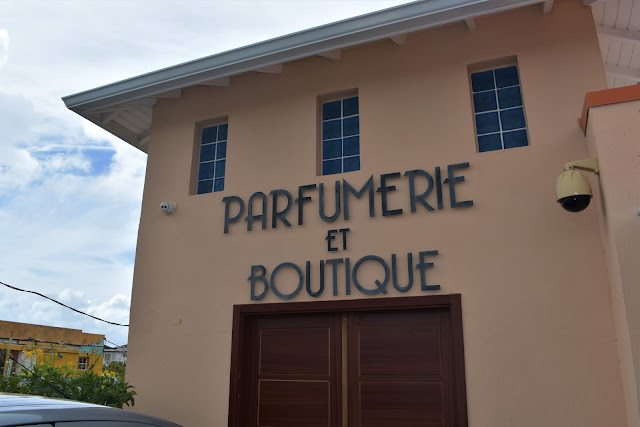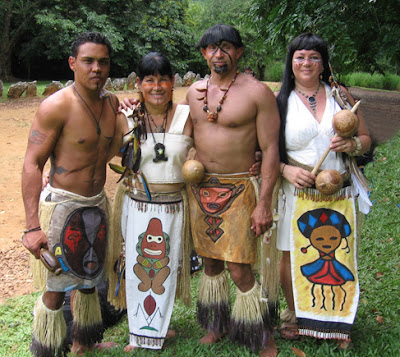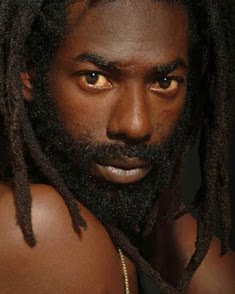Dancing With The Saints
I said I'd explore the complexities of candomble in earlier posts and here it is, finally. I'll admit, I've been avoiding this for as long as possible because there are so many layers and meanings and opinions attached to this religion that I just don't know where to begin. So I'll begin with my personal experience. On a late June night, in the small southern Brazilian town of Vassouras, I was invited to a candomble ceremony for the feast of San Juan. We drove down some roads and up some hills with only the moon lighting the way. Faintly, we heard the echos of drumming. We climbed down some stairs, past blooming bushes and I saw a huge bonfire. Men were holding large drums over them, tuning the instruments with flames. A tiny altar with flowers and a statue of San Juan stood under a small shack. The men sat down, joined by adolescent boys.
They began drumming in a swirl of intricate rhythms A groups of women, clad in long white gowns and head wraps, moved in a circle to the drums rhythms. They chanted and lifted their skirts so that their feet moved freely. It looked like the whole community of children, teens, father, mothers and grand parents had turned out for this celebration. After I was pulled into the circle to dance with the women, hot bowls of canjica were brought out. A sweet dish of white corn, peanuts and sugar, that reminded me of peanut brittle, I spooned the white clumps up as the participants watched me closely, making sure I ate everything. After canjica, strong coffee with sugar cane juice is traditionally downed but I could barely manage two sips. The Brazilian notion of coffee is more like cappuccino syrup to me. Afterwards, the boys, Juan Pedro, Marcel, Jonathan and Victor came up to me, wanting to know what there names would be in English. I had to break it to them that all except Juan already had anglicized names. They were not happy about that. But the boys cheered themselves up by singing me a Chris Brown song, which was the only English they knew.
Dancing, music and community lie at the heart of candomble but it also represents the spirit of resistance. Brought from Africa over 350 years ago, forms of candomble have sprouted all over the African Diaspora. Ancient Yoruba deities were melded with catholic saints so that uprooted Africans could continue their spiritual practices in the face of persecution. The deities or orixas, all have corresponding saints, colors and days of the week. In candomble, Saint Joan of Arc becomes Oba, the fearless fighter, Saint Lazarus is Omulu, deity of healing and Saint Michael is Logun, deity of polarity. Everywhere I went in Brazil, in restaurants, airports, shops and bookstores, I observed elements of candomble. T-shirts with images of all the orixas sell in boutiques and corner stores. Restaurants, key chains and bronze statues of Imenja, the mermaid deity of the ocean, pop up wherever there is a body of water. Even the all-important soccer teams have their own orixas. Despite candomble being outlawed for much of the 20th century, the religion remains a visible part of Brazilian culture.
In Cachoeira, the Bahian town that boasts 42 candomble houses or terreiros, I was invited to visit the Rumpane Ayono Huntobogi house. The only way outsiders can visit is by personal invitation and unfortunately, by the time we had climbed several muddy hills in the rain, the Iyalorisha or high priestess, wasn't there. Still, I got the essence of the experience. Standing outside the terreiro, on top of a sweeping hill surrounded by sacred spaces dedicated to the orixas, I could feel the energy dance around me.






Comments
I have a mini post on it also
http://ebonyintuition.blogspot.com/2008/09/what-is-candombe.html
Ebony, I read your candombe post about Uruguay. Apparently. it's a specific rhythm and music in that culture. In Brazil, candomble is a religion although I wonder if the sacred rhythms used in candomble rituals are the same as the music heard in Uruguay.